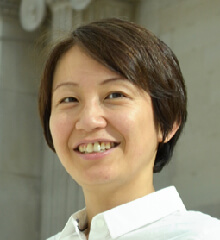About This Research
This research aims to discover the influence on modern Japanese society by the vast number of books in the Japanese language written by foreign missionaries who came to Japan between the 1860s and 2000.
The spread of the Christian faith in Japan, starting with Francis Xavier’s arrival in 1549, had a wide-ranging impact on Japanese society, especially during the Azuchi-Momoyama and Tokugawa periods. About 700,000 people out of the general population of 20 million were converted to Christianity. This spread of the Christian faith is considered to be the “biggest social and culture movement” in Japanese history (Ebisawa Arimichi, Kirishitan Nanban Bungaku Nyūmon, 1991). The books belonging to the genre of Kirishitan bungaku, documenting missionary activities, education, and martyrdom, were written mainly between the end of the Muromachi period and the beginning of the Edo period. But their legacy was carried on by the missionaries who came to Japan after the 1860s and wrote thousands of books in the vernacular. These books spread Christianity, introduced Western thought and science, creatively used the Japanese language, and interpreted Japanese literature and culture from different cultural perspectives. They not only critically developed the spirit of the earlier Kirishitan bungaku, but also became part of Japan’s modern culture by adding multi-linguistic and multi-cultural characteristics.
It is hard to find any aspect of today’s Japan, such as language, thought, literature, politics, diplomacy, education, medical care, society, art, music, and architecture, that has not been influenced by Christianity, thanks to missionaries’ activities and works they wrote in Japanese. However, there is very limited research on the influence from these works on Japan’s literature, thought and society.
This research will examine the whole process of writing, printing, publishing, disseminating, and accepting these books in Japanese by Catholic and Protestant missionaries, and will analyse the influence they have had on Japan’s religion, politics, thought, society, education, language, literature, art, maps, music and performing arts. In order to better understand what makes them both unique and at the same time universal, comparative studies of missionary writings in the Chinese and Korean languages will also be included.
Stained glass / ©Shimabara Catholic Church


